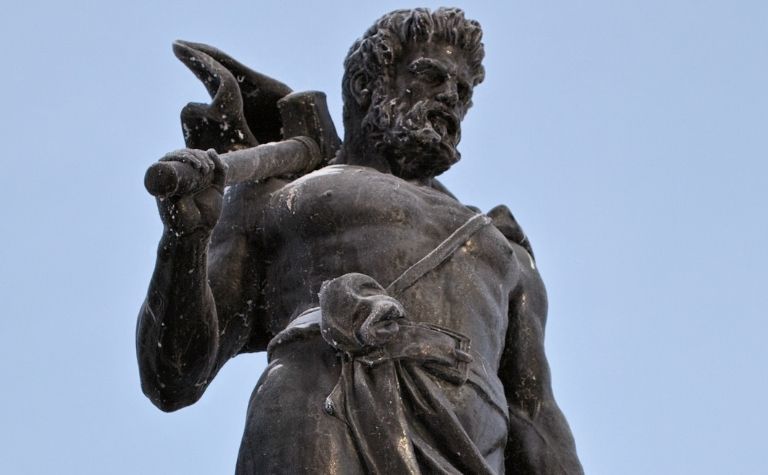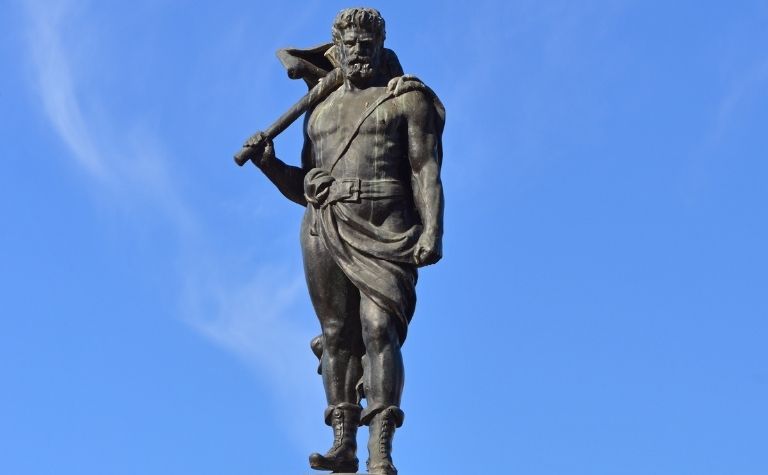Some people who know a little about Norse mythology but aren’t followers of the Marvel movies were shocked to see Thor with an eye patch.
Most people know Odin only has one eye, but seeing Thor that way was confusing. So, how exactly did Thor lose his eye?
In the movies, Thor loses his eye in Thor: Ragnarok while battling his half-sister, Hela. She slices him across the face with her sword, ruining his left eye in the process.
In the comics, however, Thor, like Odin before him, sacrifices his eye.
This article will dive more deeply into the loss of Thor’s eye in both the MCU movies and the Marvel comics storylines. It will also cover if and how he gets his eye back in each medium.
Also, see Can Thor Fly in Norse Mythology? to learn more.
Who Caused Thor to Lose His Eye and Why in the Movies?
Thor’s half-sister, Hela, causes Thor to lose his eye in Thor: Ragnarok. The two are fighting in Odin’s hall in Asgard, and Hela slashes Thor across the stomach, bringing him to his knees.
She then slices him across the face with her sword, cutting his right eye in the process. [1]
Anyone who missed this epic battle can watch it on Youtube:
While they are fighting, Hela, in typical evil villain form, delivers a monologue about how she is the one true ruler of Asgard.
As she slices Thor’s face and eye, she finishes with a clever, biting remark about how now, “You [Thor] remind me of dad.”
This is a reference to Odin only having a single eye.
How Did Odin Lose His Eye?
In the Marvel movies, Odin loses his eye in a battle with the frost giants. In the comics, he willingly sacrifices his eye to Mimir’s well in exchange for learning how to stop Ragnarok.
This story is similar to the actual Norse myth, in which he sacrifices his eye for knowledge.
Also, see Are Thor and Loki Brothers in Norse Mythology? to learn more.
What Was the Significance of Thor Losing His Eye?
Thor losing his eye in Ragnarok relates directly to Odin sacrificing his eye for knowledge in the Norse myths. Hela alludes to this when she mentions that Thor reminds her of their father.
Thor’s (unintentional) sacrifice eventually leads to the knowledge that Mjolnir isn’t the source of his power.
Until this point, Thor thought everything unique about him came from his hammer, and when Hela broke it, it nearly destroyed him mentally and emotionally.
Watching the devastation she brought to Asgard dealt him another painful blow.
It isn’t until he becomes blind in one eye that he can truly see that there is much more to him and Asgard than just his hammer and the palaces and buildings.
While Hela is — it seems — beating him, he has an out-of-body experience where he visits his father.
Odin tells him, “Even when you had two eyes, you only saw half the picture.”
He finally understands that his power has been inside of him all along and that, as Odin tells him, “Asgard is not a place. […] Asgard is where our people stand.”
He comes back from that experience more powerful and more knowledgeable than ever.

How Does Thor Lose His Eye in Marvel Comics?
In the comics, Thor, like his father, willingly sacrifices his eye(s) – twice. The first time is in Avengers: Disassembled.
He rips out both eyes, puts them into the well of knowledge, and becomes the Rune King. The second time is in War of the Realms, where he gives up his left eye.
In War of the Realms, Thor gives up his eye to find out how to defeat a major enemy, the dark elf Malekith. [2] He also gives up the remaining shards of Mjolnir.
In Avengers: Disassembled, he becomes all-powerful and gains the ability to use the Odinforce. In this particular storyline, Thor also gives up his life as part of his sacrifice.
He must die to be reborn into the powerful Rune King Thor.
Also, see Do Norwegians Still Believe in Thor? to learn more.
Does Thor Lose His Eye in the Norse Myths?
Thor never loses his eye in the Norse myths, but he is fated to die at Ragnarok.
According to the myths, Thor will die while fighting the world serpent, Jormungandr.
Thor will kill the serpent with his hammer, but Jormungandr will poison him in the process. Thor will walk nine steps and die.
The fact that some of the people’s favorite Norse gods can get hurt and even die is one thing that makes the Norse pantheon of gods so different from the gods in other mythologies.
These gods weren’t immortal, and they weren’t immune to hurts and even severe injuries. Tyr, for instance, loses a hand when Jormungandr’s brother, Fenris-Wolf, bites it off after Tyr helps deceive and bind him.
Additionally, most Norse gods will die at Ragnarok, including Odin, the All-Father, Thor, Loki, Heimdallr, Frey, Freya, and many others.
Only a few will survive the battle.

How Does Thor Get His Eye Back?
Thor gets his eye back in Avengers: Infinity War. Rocket Raccoon gives him an artificial eye that he stole.
The eye is mechanical and computerized, as evidenced by its behavior when Thor puts it in his empty socket.
It’s also brown instead of Thor’s natural blue, but it allows him to see.
This scene comes after a particularly dark, sad moment when Thor recounts all the people he’s lost.
It adds a bit of humor and levity to help lighten the mood, particularly when Rocket insinuates that he had to hide the eye inside his rectum to get it off the planet.
Does Thor Get His Eye Back in the Comics?
Thor doesn’t regain his eye in the Marvel comics. Unlike in the movies, it appears to be gone for good.
However, new comics are constantly released, and the rules for comic book characters aren’t the same as the rules for real people, so the God of Thunder may one day regain his eye.
Final Thoughts
Unlike gods in other pantheons, the Norse gods could get hurt and even die. Marvel uses this fact to make Thor a fascinating character.
